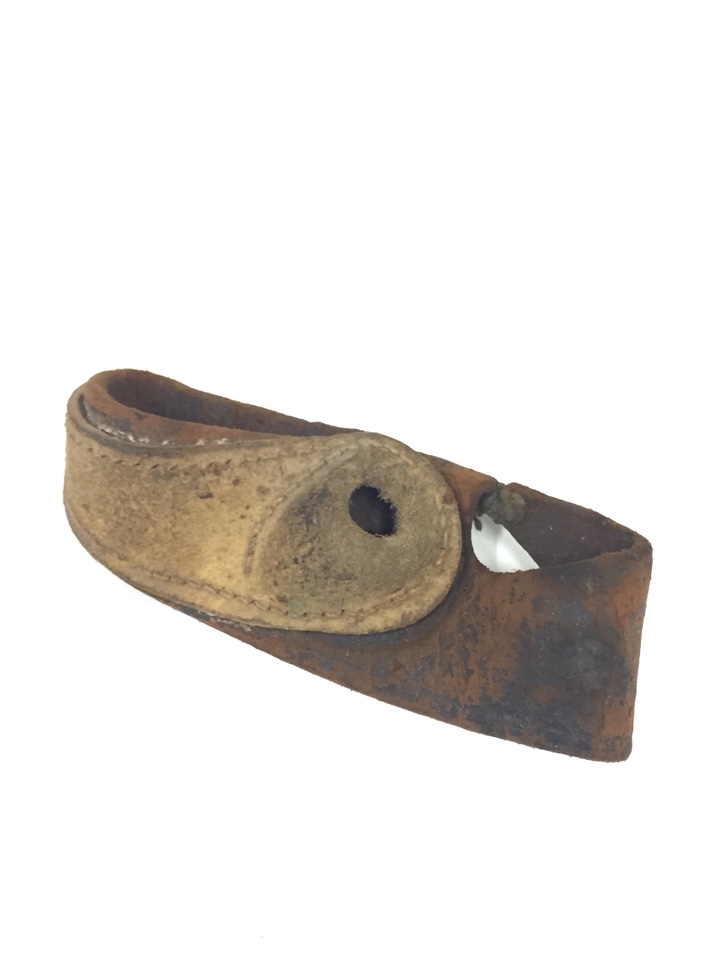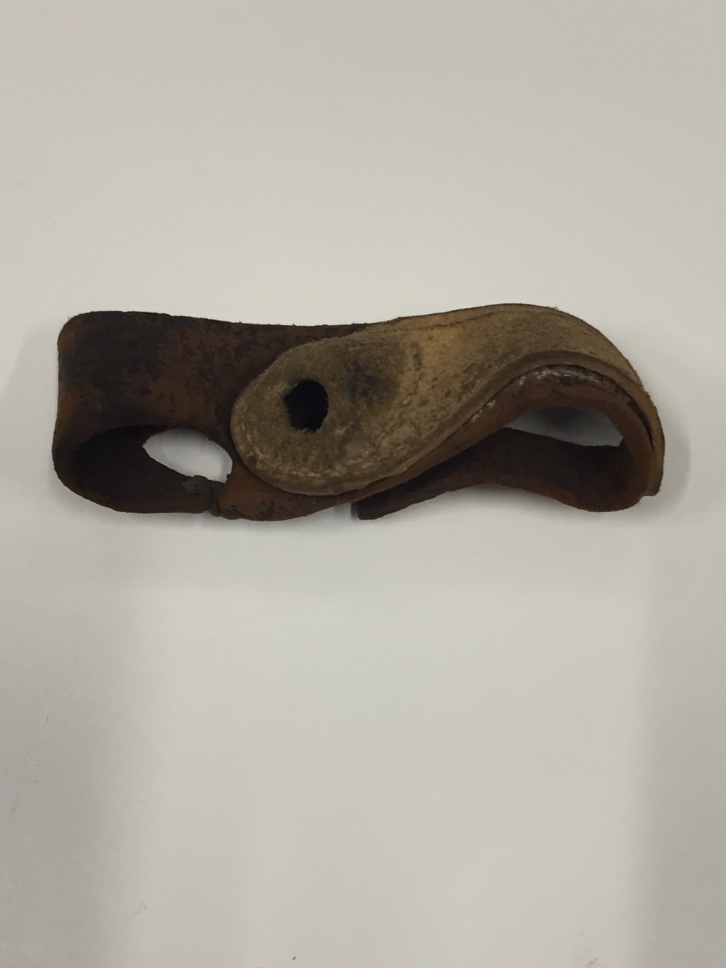Our artifact highlight this month is an interesting example of some of our maritime heritage collection. This object is referred to by several names such as a sailmaker’s palm, sewing palm or sailors palm thimble. The multiple names are probably a reflection of the diverse audience that would actually use one.
Sailmaker’s palm is associated with the art of sail making. This tool was important for sewing through tough material like leather and multiple layers of canvas. This “specialized glove” would protect a person’s hand from the sewing needle. The sailmaker’s palm would go over your whole hand with a hole for your thumb and a strap across the back of the hand to keep it in place.
Once slipped on, the thimble portion would be below your thumb in the palm of your hand. This particular palm is constructed of heavy leather and rawhide. The rawhide portion below the thumb supports a small iron thimble. The numerous indentations on the thimble would seat the needle as a sailmaker could then apply pressure to push through thick material. The design also allowed the needle to be held with the forefinger and thumb for precision while a great amount of force was applied.
So, obviously, by name this would have been an important part of a tool set for a person making sails. However, the palm thimble would have been used by sailors as well. The tool would be extremely important for mends and repairs of sails, and was also used to work with rope and splices.
This particular object appears to date pre 20th century and could date as old as the mid-1800s. The style and other attributes lead to this conclusion. The overall length is about 10 inches, and the thimble or working portion of the tool is approximately ¾ inch wide. Sailmaker’s palms in the early 1900s often were stamped with the manufactures name and or location.
Additional changes to these tools include buckles for size adjustment as well as modification to the thimble attachment. Our artifact does not have any of these features.
This tool has a basic twine tie or stitch at the leather joints where the leather would be strapped secure to the hand and thumb. The thimble is also encased with a brass/tin cover stitched into place. The metal cover also has a star design as well. The thimble attachment changed over time, and a variety of techniques were used in the early 1900s that incorporated screws and wider bases and dimples.
The condition of our sailmakers palm is good, but not without some conditions issues. Leather objects are challenging to preserve. The multiple structural layers of leather along with the additional material make this an object that requires particular care. The thimble portion is iron that left to conditions of high humidity will corrode and can cause a problem to the leather.
For storage or exhibits, the preferred environment for iron is dry (the drier the better), while the leather needs a more balanced humidity level. The objects history (function or exposure to elements) can be a preservation issue too. Over time leather in dry conditions can cause the object to become very stiff or even brittle without care.
When leather is exposed to changing atmospheric conditions (particularly humidity) this can lead to what is called red rot, which is an acidic reaction with the tanned leather and the atmosphere, primarily high humidity. This chemical reaction breaks down the fibrous structure of the leather and deteriorates leaving a red powder on the surface of the object. Most of us have probably seen this with older leather bound books, particularly, objects manufactured from the mid-1800 to 1900s.
This is a common problem for leather objects from that time period because of the vegetable tanning agent that was used. Red rot is irreversible and will eventual destroy the object.
Historically, the only treatment conservationists could do is isolate the damage and prevent further deterioration with the use of consolidates and wax sealants. However, today advancements in leather conservation are able to reduce this acid reaction and stabilize the fibrous structure at molecular level preventing further damage.
Jason Titcomb is the Chief Curator for the St Augustine Lighthouse & Maritime Museum. He holds a graduate degree in anthropology from Iowa State University.





